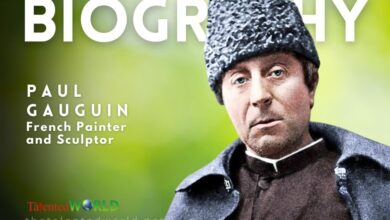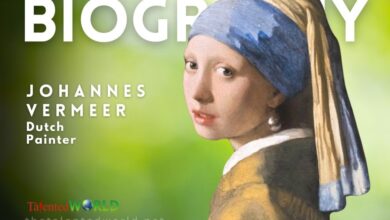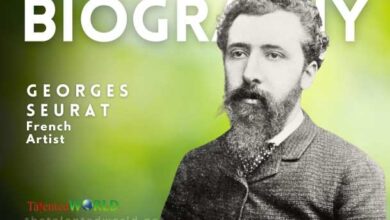
Photo: https://www.publicdomainpictures.net/en/view-image.php?image=8615&picture=rembrandt
Table of Contents
ToggleQUICK FACTS
Nationality: Dutch
Born: July 15, 1606
Born Place: Leiden, Netherlands
Died: October 4, 1669
Death Place: Amsterdam, Netherlands
On view: Rijksmuseum, National Gallery of Art
Periods: Baroque, Dutch Golden Age, Baroque painting
Gender: Male
BIOGRAPHY
Rembrandt Harmenszoon van Rijn (15 July 1606[1] – 4 October 1669) was a Dutch draughtsman, painter, and printmaker. An innovative and prolific master in three media, he is generally considered one of the greatest visual artists in the history of art and the most important in Dutch art history. Unlike most Dutch masters of the 17th century, Rembrandt’s works depict a wide range of style and subject matter, from portraits and self-portraits to landscapes, genre scenes, allegorical and historical scenes, and biblical and mythological themes as well as animal studies. His contributions to art came in a period of great wealth and cultural achievement that historians call the Dutch Golden Age, when Dutch art (especially Dutch painting), although in many ways antithetical to the Baroque style that dominated Europe, was extremely prolific and innovative and gave rise to important new genres. Like many artists of the Dutch Golden Age, such as Jan Vermeer of Delft, Rembrandt was also an avid art collector and dealer.
Rembrandt never went abroad, but he was considerably influenced by the work of the Italian masters and Netherlandish artists who had studied in Italy, like Pieter Lastman, the Utrecht Caravaggists, Flemish Baroque, and Peter Paul Rubens. After he achieved youthful success as a portrait painter, Rembrandt’s later years were marked by personal tragedy and financial hardships. Yet his etchings and paintings were popular throughout his lifetime, his reputation as an artist remained high, and for twenty years he taught many important Dutch painters.
Rembrandt’s portraits of his contemporaries, self-portraits and illustrations of scenes from the Bible are regarded as his greatest creative triumphs. His self-portraits form a unique and intimate biography, in which the artist surveyed himself without vanity and with the utmost sincerity. Rembrandt’s foremost contribution in the history of printmaking was his transformation of the etching process from a relatively new reproductive technique into a true art form, along with Jacques Callot. His reputation as the greatest etcher in the history of the medium was established in his lifetime and never questioned since. Few of his paintings left the Dutch Republic while he lived, but his prints were circulated throughout Europe, and his wider reputation was initially based on them alone.
In his works he exhibited knowledge of classical iconography, which he molded to fit the requirements of his own experience; thus, the depiction of a biblical scene was informed by Rembrandt’s knowledge of the specific text, his assimilation of classical composition, and his observations of Amsterdam’s Jewish population. Because of his empathy for the human condition, he has been called “one of the great prophets of civilization”. The French sculptor Auguste Rodin said, “Compare me with Rembrandt! What sacrilege! With Rembrandt, the colossus of Art! We should prostrate ourselves before Rembrandt and never compare anyone with him!”
EARLY LIFE
Rembrandt Harmenszoon van Rijn was born on 15 July 1606 in Leiden, in the Dutch Republic, now the Netherlands. He was the ninth child born to Harmen Gerritszoon van Rijn and Neeltgen Willemsdochter van Zuijtbrouck. His family was quite well-to-do; his father was a miller and his mother was a baker’s daughter. Religion is a central theme in Rembrandt’s paintings and the religiously fraught period in which he lived makes his faith a matter of interest. His mother was Roman Catholic, and his father belonged to the Dutch Reformed Church. While his work reveals deep Christian faith, there is no evidence that Rembrandt formally belonged to any church, although he had five of his children christened in Dutch Reformed churches in Amsterdam: four in the Oude Kerk (Old Church) and one, Titus, in the Zuiderkerk (Southern Church).
As a boy he attended Latin school. At the age of 14, he was enrolled at the University of Leiden, although according to a contemporary he had a greater inclination towards painting; he was soon apprenticed to a Leiden history painter, Jacob van Swanenburg, with whom he spent three years. After a brief but important apprenticeship of six months with the painter Pieter Lastman in Amsterdam, Rembrandt stayed a few months with Jacob Pynas and then started his own workshop, though Simon van Leeuwen claimed that Joris van Schooten taught Rembrandt in Leiden. Unlike many of his contemporaries who traveled to Italy as part of their artistic training, Rembrandt never left the Dutch Republic during his lifetime.
He opened a studio in Leiden in 1624 or 1625, which he shared with friend and colleague Jan Lievens. In 1627, Rembrandt began to accept students, among them Gerrit Dou in 1628.
In 1629, Rembrandt was discovered by the statesman Constantijn Huygens (father of the Dutch mathematician and physicist Christiaan Huygens), who procured for Rembrandt important commissions from the court of The Hague. As a result of this connection, Prince Frederik Hendrik continued to purchase paintings from Rembrandt until 1646.
PAINTING MATERIALS
Technical investigation of Rembrandt’s paintings in the possession of the Gemäldegalerie Alte Meister and in the Gemäldegalerie Alte Meister (Kassel) has been conducted by Hermann Kühn in 1977. The pigment analyses of some thirty paintings have shown that Rembrandt’s palette consisted of the following pigments: lead white, various ochres, Vandyke brown, bone black, charcoal black, lamp black, vermilion, madder lake, azurite, ultramarine, yellow lake and lead-tin-yellow. One painting (Saskia van Uylenburgh as Flora) reportedly contains gamboge. Rembrandt very rarely used pure blue or green colors, the most pronounced exception being Belshazzar’s Feast in the National Gallery in London. The book by Bomford describes more recent technical investigations and pigment analyses of Rembrandt’s paintings predominantly in the National Gallery in London. The entire array of pigments employed by Rembrandt can be found at ColourLex. The best source for technical information on Rembrandt’s paintings on the web is the Rembrandt Database containing all works of Rembrandt with detailed investigative reports, infrared and radiography images and other scientific details.
The contents of this page are sourced from Wikipedia article on 19 July 2020. The contents are available under the CC BY-SA 4.0 license.






